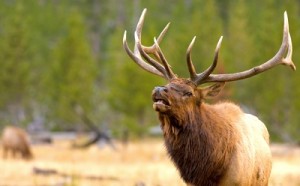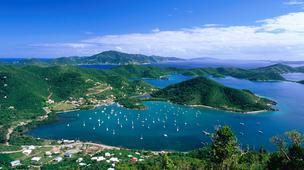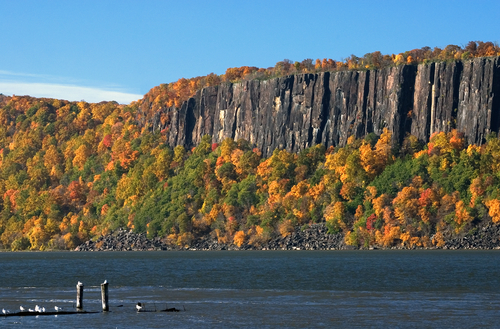
You know fall has arrived in Yellowstone National Park when you can see bull elk starting to build their harems and can hear them bugling.
I was driving northward from Jackson Hole to Bozeman the other night, and decided to take the long way home—through the middle of Yellowstone National Park.
The hour was late; the main road was mine alone. No other traffic under a sky of stars but the sky was brooding with a fall storm moving in. Earlier in the week a grizzly bear had been killed for allegedly having been present when a hiker in Hayden Valley was killed and eaten late in August. That news coincided with the announcement from park headquarters in Mammoth Hot Springs that three million people had visited Yellowstone in 2011.
As I entered Hayden Valley in the thermal field around Mud Volcano, a herd of bison was massed on the highway that forced me to stop. Not wanting to stress the animals while they trudged along over asphalt, I coursed slowly behind them.
What I hadn’t counted on was that this assemblage of bison mothers, yearlings and calves, plus a few giant venerable bulls, was only half the herd. The remaining members of the extended clan came on the road behind and soon I was engulfed by a herd of 80 to 100 flowing north for a few miles.
I dimmed the headlights and just went with the current. I rolled down the car windows and listened to their hooves, grunts, and calf wails. Why do I love Yellowstone so much in autumn? Experiences like this are part of the reason. I crossed paths with no other human.
After my communion with the bison, I headed north and paid a visit to a dear old friend in the middle of the park. He told me to be awake and alert as I walked to his front door. “Scarface, ” a large male grizzly bear that forages for plants in the meadows around the house was in the neighborhood. (Scarface normally keeps to himself and doesn’t bother people).
We had a great chat and as I was leaving, just short of midnight, the piercing, whistling sounds of bugling bull elk—three bulls each with their own different “harems” of females—were sounding back and forth in near total blackness around my friend’s home.
Bull wapiti vocalize like this in autumn not only to sonically demark their turf and ward off other bull suitors, but it’s their way of keeping their band together.
There are fewer elk in Yellowstone than there used to be—owed, of course, to predation by wolves and grizzlies. That’s bad news if a person loves elk and would prefer that Yellowstone have fewer griz and no wolves; it’s good if one believes Yellowstone should be a refuge for all of its original species that existed here at the park’s founding in 1872.
It’s not a matter of celebrating or lamenting the rise of one species and the fading in numbers of another; it’s the stark realization that nature isn’t static, whether we want to keep it that way—or not. Yellowstone is dynamic. Everything changes.
Todd Wilkinson
11 Oct 2011
http://www.nationalparkstraveler.com/2011/10/taking-long-way-home-through-yellowstone-national-park8872
Average Rating: 4.9 out of 5 based on 166 user reviews.
 US Virgin Islands
US Virgin Islands Any visitor to New York City should spend a day or two in the Hudson River Valley, a slice of rural Americana just north of the city. Its leafy drives, wineries and farm-to-table food options draw even spoiled-for-choice Manhattanites. A favourite spot to stay is former B-52s singer Kate Pierson’s Lazy Meadow, a renovated 1950s cabin complex near Woodstock.
Any visitor to New York City should spend a day or two in the Hudson River Valley, a slice of rural Americana just north of the city. Its leafy drives, wineries and farm-to-table food options draw even spoiled-for-choice Manhattanites. A favourite spot to stay is former B-52s singer Kate Pierson’s Lazy Meadow, a renovated 1950s cabin complex near Woodstock.